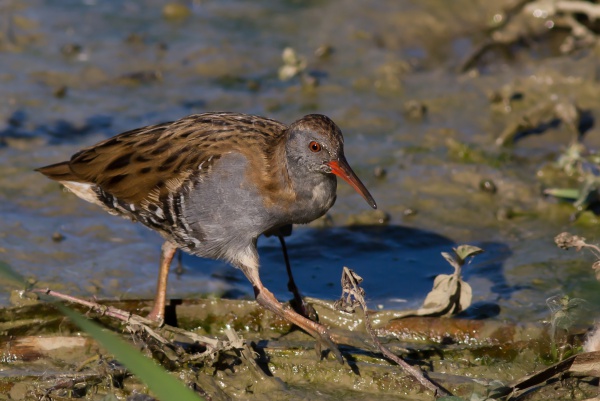Facts About Water rail
The water rail is a captivating bird belonging to the rail family, found across Europe, Asia, and North Africa. These birds flourish in wetlands with abundant vegetation, which they expertly navigate thanks to their slender bodies. Adults exhibit brown upperparts, blue-grey underparts, black barring on their flanks, long toes, a short tail, and a distinctive reddish bill. Young water rails resemble adults but have buff-colored plumage.
Water rails are adept nest builders, using nearby vegetation to construct their nests above water. The female primarily incubates the eggs, and once hatched, the chicks are relatively self-sufficient from the start. As omnivores, water rails consume both invertebrates and plant matter.
There are several subspecies of the water rail, including *R. a. aquaticus*, *R. a. hibernans*, and *R. a. korejewi*. These birds are quite vocal, employing a range of calls for purposes such as marking territory and courtship.
Fossil records indicate that water rails have been present in their current range since the late Pleistocene. Despite their elusive nature, they have been studied for their distinct feeding habits, breeding rituals, and territorial behaviors.
Water rails face threats from predators such as mammals and large birds, and they can also be affected by parasites such as lice, ticks, and bacteria. Habitat loss has led to declining populations in some regions, but overall, they are listed as "Least Concern" on the IUCN Red List. On islands, introduced predators pose a significant threat, prompting ongoing conservation efforts. Historically, humans have also hunted water rails for food.

 Finland
Finland